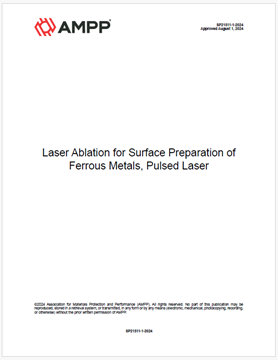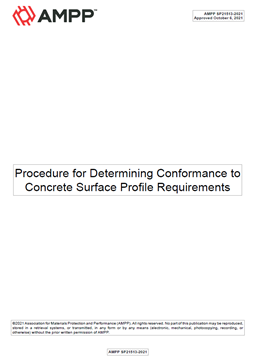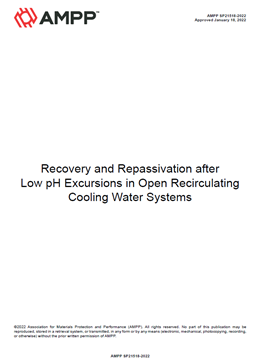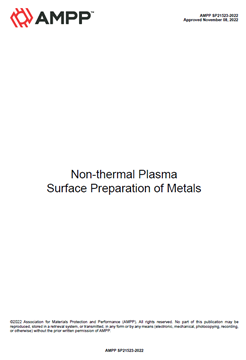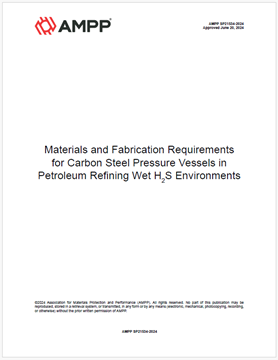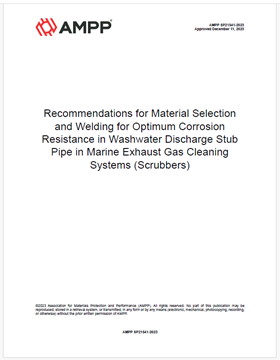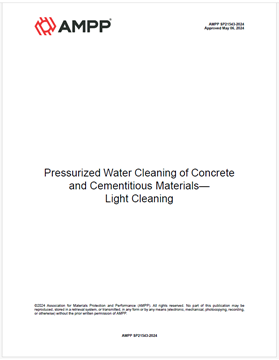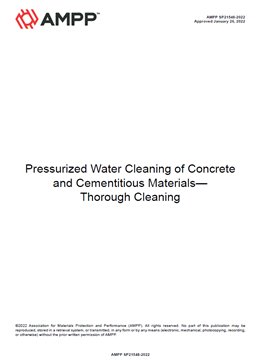Search
Products tagged with 'Standards Benefit For Members'
View as
Sort by
Display
per page
AMPP SP21496-2023-IEEE Std 2683-2022, Guide to Strength loss of Tubular Steel Poles
Product Number:
AMPP SP21496-2023-IEEE Std 2683
$109.00
AMPP SP21507-2022, Standard Practice for Sandwich Plate Repair of Steel Structures
Product Number:
AMPP SP21507-2022
Publication Date:
2022
$109.00
AMPP SP21511-1-2024, Laser Ablation for Surface Preparation of Ferrous Metals, Pulsed Laser
Product Number:
AMPP SP21511-1-2024
Publication Date:
2024
$109.00
AMPP SP21513-2021, Procedure for Determining Conformance to Concrete Surface Profile Requirements
Product Number:
AMPP SP21513-2021
Publication Date:
2021
$109.00
AMPP SP21518-2022, Recovery and Repassivation after Low pH Excursions in Open Recirculating Cooling Water Systems
Product Number:
AMPP SP21518-2022
Publication Date:
2022
$109.00
AMPP SP21520-2023, Acceptance Criteria for Cathodic Protection of Steel in Concrete Structures
Product Number:
AMPP SP21520-2023
Publication Date:
2023
$109.00
AMPP SP21523-2022, Non-thermal Plasma Surface Preparation of Metals
Product Number:
AMPP SP21523-2022
$109.00
AMPP SP21534-2024, Materials and Fabrication Requirements for Carbon Steel Pressure Vessels in Petroleum Refining Wet H2S Environments
Product Number:
AMPP SP21534-2024
Publication Date:
2024
$109.00
AMPP SP21541-2023, Recommendations for Material Selection and Welding for Optimum Corrosion Resistance in Washwater Discharge Stub Pipe in Marine Exhaust Gas Cleaning Systems (Scrubbers)
Product Number:
AMPP SP21541-2023
Publication Date:
2023
$109.00
AMPP SP21543-2024, Pressurized Water Cleaning of Concrete and Cementitious Materials—Light Cleaning
Product Number:
AMPP SP21543-2024
Publication Date:
2024
$109.00
AMPP SP21548-2022, Pressurized Water Cleaning of Concrete and Cememtitious Materials - Thorough Cleaning
Product Number:
AMPP SP21548-2022
Publication Date:
2022
$109.00
This standard is intended for use by coating or lining specifiers, applicators, inspectors, or others who require the use of pressurized water cleaning technology to achieve a defined level of visual cleanliness of concrete surfaces. This standard contains requirements for Thorough Cleaning. Requirements for Light Cleaning are addressed in a separate standard.
AMPP SP21554-1-2023, Environmental Severity Monitoring Site Selection Guide
Product Number:
AMPP SP21554-1-2023
Publication Date:
2023
$109.00



